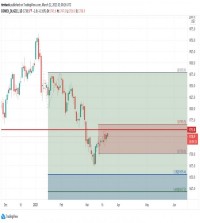|
Opalesque Industry Update - As investors continue to boost their allocations to alternatives, how they address the issue of enterprise risk can have important consequences for the perceived risk within their portfolios, according to a new white paper from BNY Mellon. Enterprise risk analysis, including stress testing and scenario assessment, has become increasingly popular with institutional investors. But alternative investments – hedge funds, private equity, real estate, etc. – present many challenges. Authored by BNY Mellon and its affiliate HedgeMark, the paper, Considering the Alternatives: A Practical Look at Enterprise Risk Analysis and Alternative Investments, explores the impact of incorporating illiquid or non-transparent investments into enterprise risk analysis. It looks at how different approaches to data management can affect the resulting analysis, the associated benefits and issues, and offers solutions. “With a sharper focus on risk by regulators and other stakeholders, many institutional investors seek a fuller picture of how risk operates across investments within an entire portfolio,” said Frances Barney, CFA, head of Consulting-Americas for Global Risk Solutions at BNY Mellon. “Data is getting more and more critical and investors need to be informed and comfortable with the assumptions of their risk assessment, otherwise, they can come out of it with a false sense of security about their portfolio.” Enterprise risk includes the many factors that can affect an organization – market, reputational, regulatory, compliance, operational and legal risk. Enterprise risk analysis also can include forward-looking, or “ex-ante,” calculations that estimate investment risks across multiple asset classes. The paper focuses on the risks inherent to an investment program with multiple asset classes owned by a single organization, such as a pension plan or a charitable foundation. Highlights of the key findings and insights into best practices include:
Already some regulators require reports on stress testing and scenario analysis, such as through Form PF for U.S. investment advisers to hedge funds, and pursuant to Solvency II for insurance companies, and UCITS for European investment funds, Barney added. “We’ve learned the most crucial component is the veracity of the underlying data, which becomes even more important and difficult to manage as more opaque assets are held in the portfolio,” she said. |
Industry Updates
White Paper: Illiquid or non-transparent investments still a challenge for Enterprise Risk Data processes
Tuesday, January 19, 2016
|
|





 RSS
RSS







